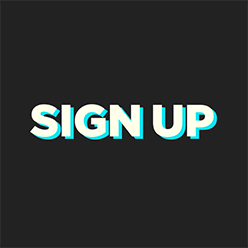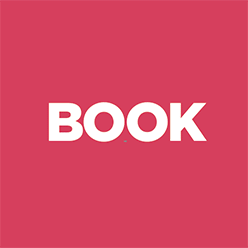Sunday, March 9th, 2025
I visualize myself contributing to a cinematic work at the level where I get a production bumper credit. Personal pie-in-the-sky. I would temper this egoic display by making it visually appealing in it’s own right, slightly obscuring the declaration while preserving legibility for the interested parties.
It’s a motion-design sample. Simple. No plugins, no AI, just a guy with an Adobe sub.
Friday, March 7th, 2025
In the digital interactive advertising space, we have an element called the “call-to-action”. We explicity state, and suggest, the action that we hope the audience will take as a result of being exposed to the ad.
Hundreds of interactive ads have come across my desk, and I noticed the trend of the CTA becoming merged with the Button–to the extent that we refer to the button as the CTA. Well, I reject the notion that Button and CTA are synonymous.
The call to action is a design element that calls the viewer to action. It doesn’t have to be a button. A call to action can be animated, attractive, it can dance upon the canvas. While a button needs to stay put.
These are call-to action-studies built in Aftereffects, and lovingly converted to GIF. You might be surprised how much push back can come from suggesting the CTA and the Button are not necessarily merged. I guess people can get set in their ways. You’ve heard of “thinking outside the box” and this is no different. Think outside the button!
Friday, March 7th, 2025

Here is an illustrated wave with original lettering in the negative space that fits in the groove. Designed for a charter company in San Diego. There are many charter lines throughout the world called “vibe”. It’s a popular name. Yet, browsing their brands and marketing work, I find they generally aren’t “vibing”.
Why not?
Their use of cold mechanical typefaces as logos. Fast, cheap, and easy to pick a font, type the name and “ship” it. I don’t think that’s a designer’s job. The job is to actually DESIGN the thing. A logo is one of the highest forms of display text their is and deserves some custom lettering for a major improvement. And the results are more rewarding.
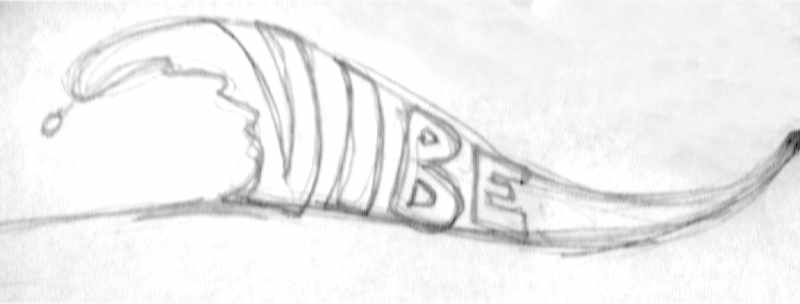
Friday, March 7th, 2025
I created this animation as a promotional piece for Oh Ok Creative. I personally executed on every aspect of this video. The character is hand drawn in pencil, re-drawn in blank ink (a sharpie™ to be exact), then scanned and colored digitally. The limbs and guitar were drawn seperately and placed in separate layers. Each layer is given an anchor point to form a very simple character rig. I recorded the guitar music myself, scheming a riff that would make a suitable 6 second loop, and animated what I have come to refer to as “guitar kid”.
While I don’t consider myself an animator, but a character designer, I believe projects like this open the way to collaboration.
Thursday, March 6th, 2025
The great Pegasus aloft a pair of scales is a fitting symbol for the power, focus, and energy accessible through the rich and balanced flavor of premium Robusta coffee beans grown and harvested in Greece–the scales themselves symbolizing fair trade and a commitment to unwavering quality.
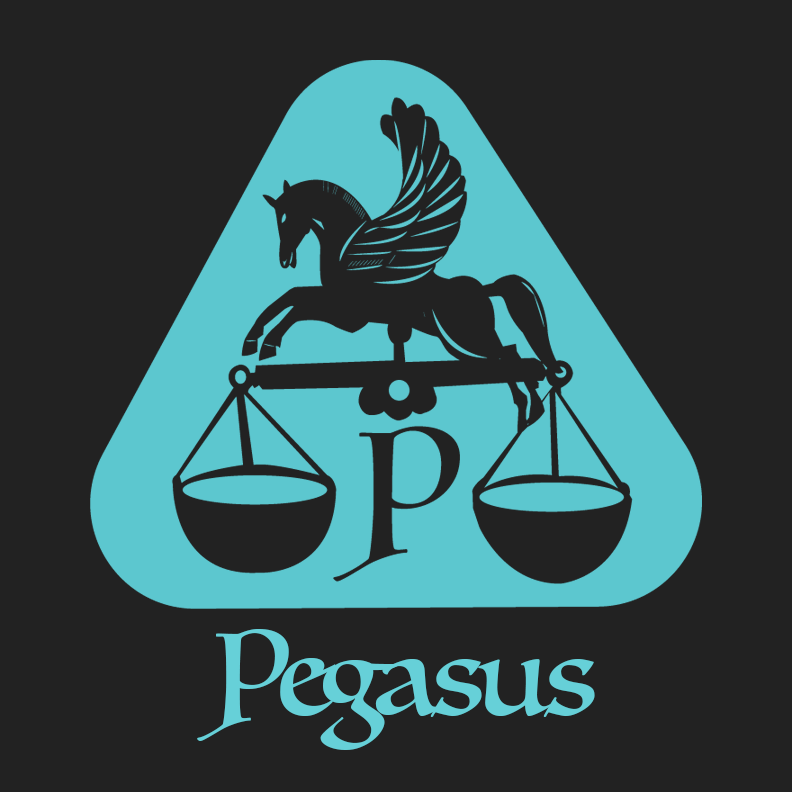
Thursday, March 6th, 2025
The golfer’s classic gif is another example of executing every step of a project. I filmed myself at a driving range, color edited the video, and selected the best frames for a short gif. The “Golfer’s Classic” is a tournament I hosted and competed in back in 2018. And I won! I was the only participant.
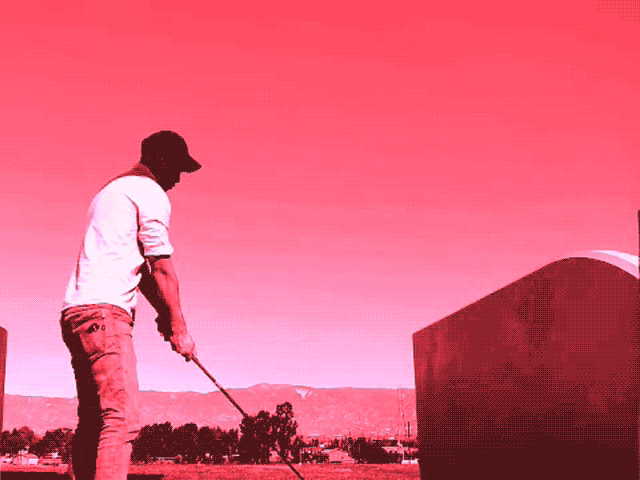
Why did you make this?
After years of working as a production artist, executing on concepts conceived by others, it became clear I needed to self-initiate work I could call my own. It doesn’t matter that the golf tournament is fictitious, the demo is real.
What skill set does this demonstrate?
It takes care and sensitivity to keep an animated GIF to a size that is reasonable for an internet browser to handle. That challenge becomes magnified working with video. You select only the most crucial colors from the file, and delete the rest. The magenta monotone treatment helps, but that was an aesthetic choice. There are still hundreds of slight variations in color that can be eliminated and that is done with intention and care.
It also demonstrates the fundamentals of video editing, file handling, timeline management, and working with video layers in Photoshop.
Thursday, March 6th, 2025

At one point I was moved to re-design marketing and promotion work for entities that I felt deserved better treatment. One such instance was the “Make Music Festival” in Pasadena in 2015. No offense, but even then it was clear that official treatments like the one below were lacking in effort and imagination.

The vibe I would want to contribute to a local California music festival: Something historic, psychedelic, and whimsical. Above all it should be musical. I had adopted the practice of gathering images for what was called in the not-distant past a “mood board”, where you establish a mood to draw from using references. The prevailing images I held in mind were these:
The Grateful Dead’s “skull and roses” logo by Stanley “Mouse” Miller and Alton Kelley.

And this artwork representing the Ancient and Honorable Order of E Clampus Vitas.

The Dead and The Clampers are humorous and I wanted my submission to carry some humor as well.
How did you do it?
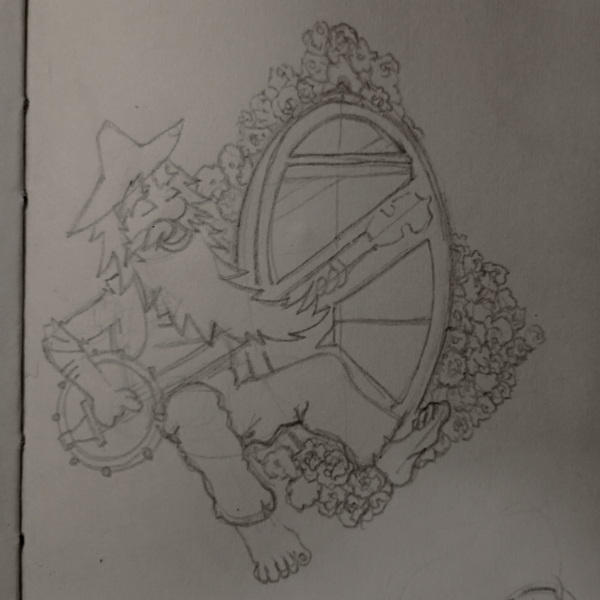
For subjects like this I work in pencil, then scan or photograph, and color digitally in Photoshop. More recently I have moved toward traditional dry media, and digital alternatives to Adobe. A discussion better engaged in a future post.
Why the roses?
Pasadena is famous for it’s annual Rose Parade, and Rose Bowl. There are roses everywhere, even in the city logo. Inclusion of the rose, given a treatment reminiscent of one of the state’s best known bands just works. I sought to replicate the Miller and Kelley roses in a style that matched the cartoon aesthetic of my bearded banjo player.

Why the banjo?
I had the Pasadena Folk Music Society in mind.
Why the long beard and overalls?
Bringing together the historical aspect of California gold mining, the miner aesthetic, and the California tradition of jamming barefoot outside in the sun. I feel this is what you want to reflect promoting an outdoor music festival in a California city at the foot of a mountain.
The official artwork that made use of radial lines depicting sun rays, as well as a giant yellow circle for a sun began to touch on this, but there were problems. For example, the rays could have been centered with the sun as their origin. I don’t think the pink and green were the right choices for the text color. It should be acknowledged they have made improvements of their own over the years.
My version could use some improvement too, now that I look at it again. I tried to give the text the appearance of carved wood grain. Just a little more time on that effect would have been well spent. But, in a way the fast rendering supports the spontaneity, absurdity, and fun of a festival in the city. Since this time period I have watched cartoon characters make a comeback in marketing materials, which is pleasing.
Wednesday, March 5th, 2025
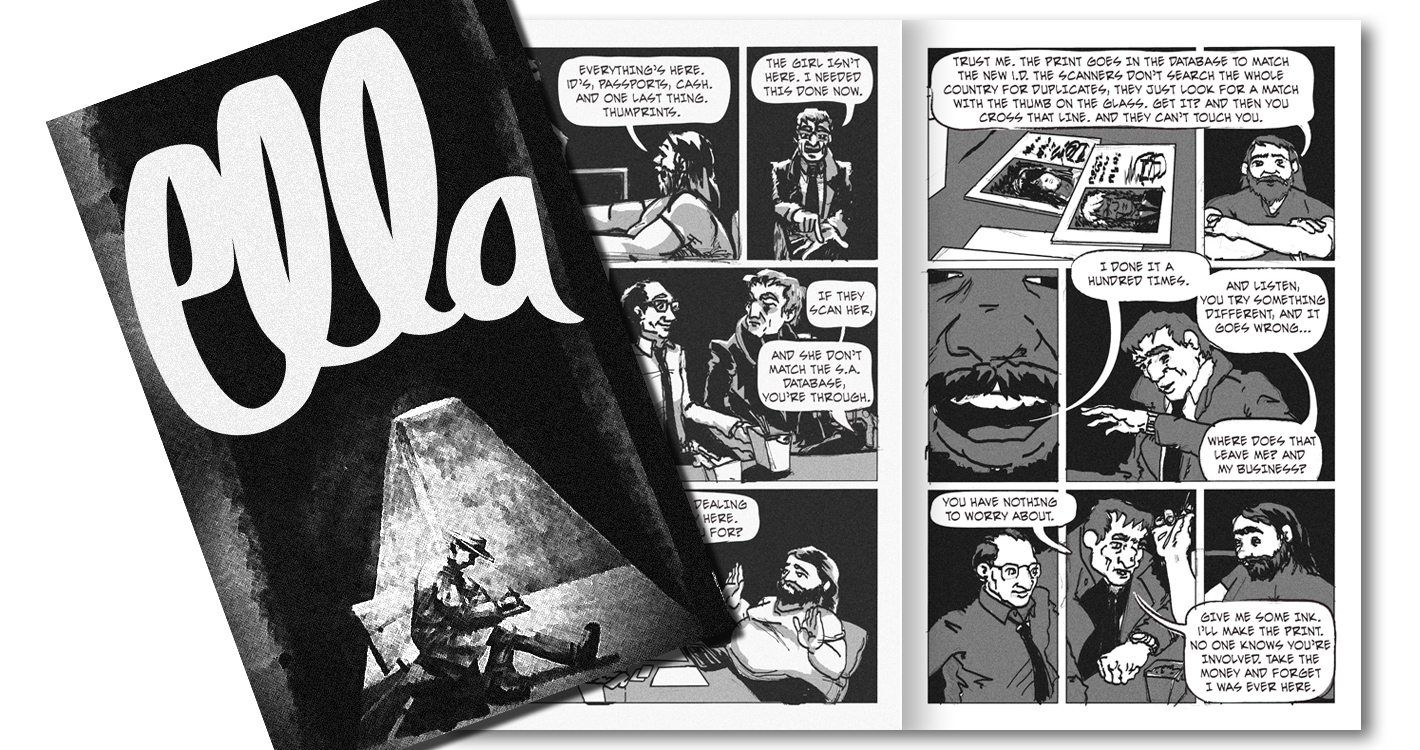
In the winter of 2012 I dreamed a story of a girl who is kidnapped, then rescued by some hero whom she rewards with a stocking full of Gold. As a result of the gift the hero is implicated in a crime far worse than the one he prevents. I committed to telling this story in comic book format.
What did you learn from this project?
“Ella” led me down a path of inquiry that has proven highly valuable to my personal and professional growth as a writer. Realizing the complexities of telling a compelling story with the necessary dramatic elements, I have taken coursework in drama and screenwriting since the beginning of this work, with the intention of manifesting “Ella” and other stories with full clarity. I’m aware of the potential for sequential art works to be adapted to film, and this has become a long term goal which I am actively pursuing.
The only way to really complete work like this is through organization and scheduling and that is also a skill that I have developed through the process of writing, character design, pencil work, digital inking, and layout.
You’re welcome to view the book by following these links:
Part 1.
Part 2.
Wednesday, March 5th, 2025
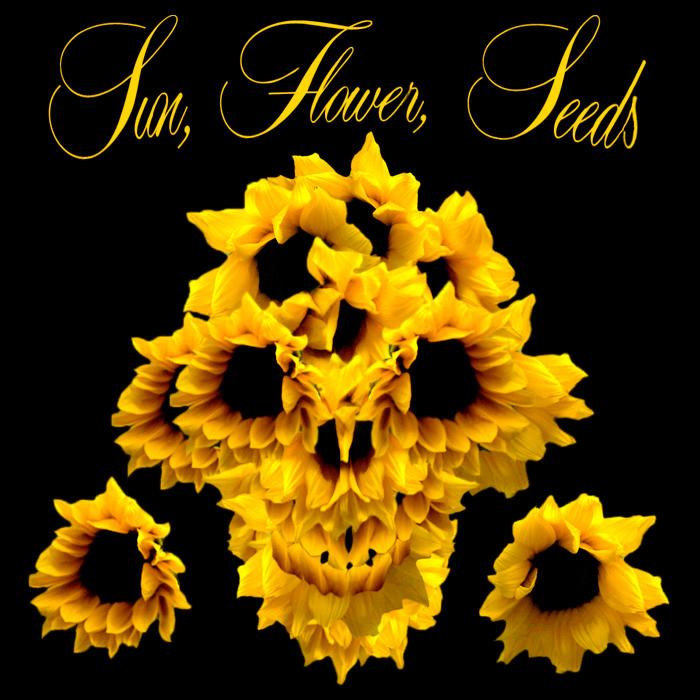
Wednesday, March 5th, 2025

Goodshop is an online shopping portal that offers discounts to it’s members, donating a portion of proceeds to non-profit organizations that do good. In 2015 I worked with The Media Grind agency and Goodshop by designing the visual guidelines for their Goodshop Sunday promotion.
My work included repurposing the shopping bag element in the logo, and developing the typographic styling for a series of social media posts, as well as the visual system specifying consistent color and placement of the elements.
It’s very important to provide appealing graphics when circulating what amounts to an advertisement in a social media feed. There is a delicate relationship of trust between an organization and it’s followers–and it’s vital that the messages be simple, readable, and aesthetically pleasing.
What challenges were overcome with this project?
It isn’t uncommon to be tasked with a brand project, without access to any of the original creative assets, making a “repurposing” job more challenging than it sounds. That was the case here. So, using a low resolution version of the logo that was available on the website, I drew an exact replica of the shopping bag icon in vector using Adobe Illustrator. This task requires a sensitivity to line weight, the subtlety of the curve, and a working understanding of the tools involved.
The other main challenge was a typographic one. There is often a danger of committing to “logo slap” where a careless practitioner “slaps” the logo on everything, adding no value but negative in the form of redundancy. Finding such slappy redundancy to be creatively loathsome, I took care to develop a type treatment that is unique, readable, and pleasing; taking advantage of recognizeability while presenting a fresh message in the same glance.

